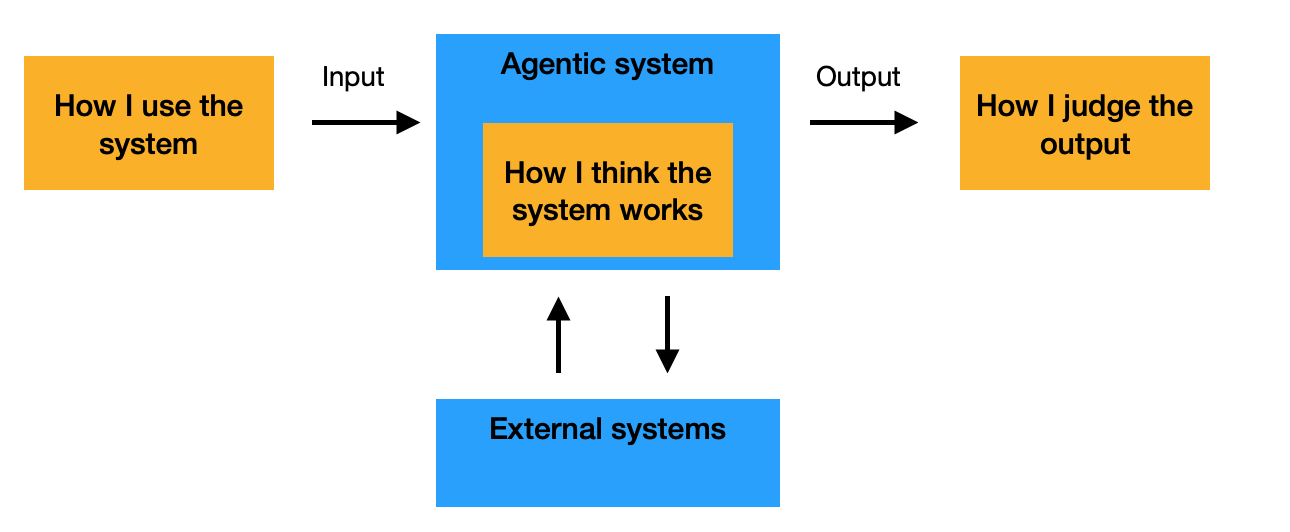Kênia Sousa
Business, Process & Data Analysis
Designing Agentic Systems with People in Mind

Interest in agentic systems, AI systems that can take initiative and act on behalf of humans, is growing rapidly. These systems are becoming feasible across industries. Luckly, most organizations are seeing the human in the loop, especially in mission-critical contexts.
I recently came across an interesting study entitled “Building Appropriate Mental Models: What Users Know and Want to Know about an Agentic AI Chatbot” that explores how people interact with agentic systems and evaluate their outputs. The insights are highly relevant for anyone working on Process Improvement, Digital Transformation and Human-Computer Interaction.
Continue reading...Using a Process Mindset to Drive Innovation with Agentic AI

What Is Agentic AI?
My interest for generative Artificial Intelligence (AI) keeps growing. But as I go deeper, I find myself drawn to Agentic AI. This shift raises a few questions, such as what is the difference between generative AI and Agentic AI? And how can process engineering help us understand, structure, and design smart autonomous systems?
A plain LLM solution operates in a reactive mode. It waits for a prompt and then processes it using its language capabilities. Their context is limited to the current interaction. Here, you can think of when you ask a Large Language Model (LLM) chatbot, such as ChatGPT a question.
Moving towards more advanced LLM-based systems, agents leverage the LLM for different sub-tasks. They often operate in response to an initial user prompt and follow a predefined sequence of operations. Here, you can use an LLM-based solution that acts as an intelligent interface, translates a human request and finds relevant information from a knowledge base.
An agentic AI system is designed to understand a high-level goal and independently plan and execute multi-step actions, utilize a diverse set of tools, and adapt its approach based on the outcomes, all aimed at achieving that overarching objective with minimal human intervention.
Continue reading...Is Generative AI Weakening Our Critical Thinking?
As generative AI tools like ChatGPT and Copilot rapidly integrate into knowledge work, they’re streamlining how we write, brainstorm, and retrieve information. But there’s a growing concern among researchers, educators, and business leaders: What’s happening to our critical thinking in the process?
A “recent study” titled “The Impact of Generative AI on Critical Thinking: Self-Reported Reductions in Cognitive Effort and Confidence Effects from a Survey of Knowledge Workers” offers valuable insights into this question. By surveying 319 knowledge workers, the authors explored when and how professionals perceive they use critical thinking when interacting with generative AI and how generative AI impacts their perceived effort of thinking critically.
Here are the key takeaways from the study and why they matter for the future of work.
Continue reading...
Kênia Sousa
Recent Posts
-
Embracing the AI Shift: Copilot and the New Era of Work
-
Product Owner and Process Engineer
-
What I read in 2024
-
The Science of Choice
-
Rolling out Enterprise Architecture
-
7 Steps to Create Processes
-
First thoughts on Prediction Machines
-
The woman I am
-
Becoming a Runner
-
Business Process Overview
-
How to link Business Rules with Business Objects
-
Analysing Open Data from the Canadian Government with Python
-
Analysis of an Infographic according to Alberto Cairo's mechanisms
-
Git: How to know if your directory is already under version control?
-
Changing R library path